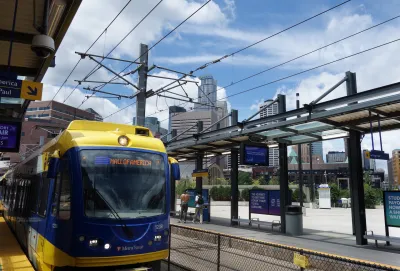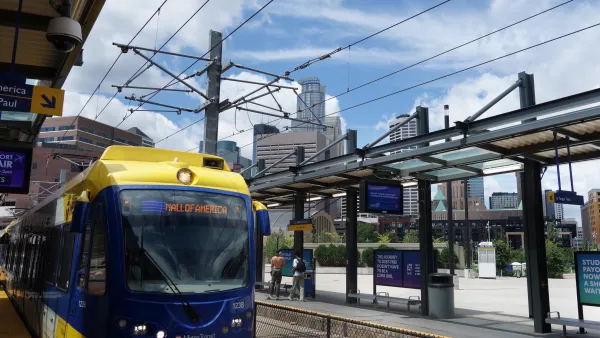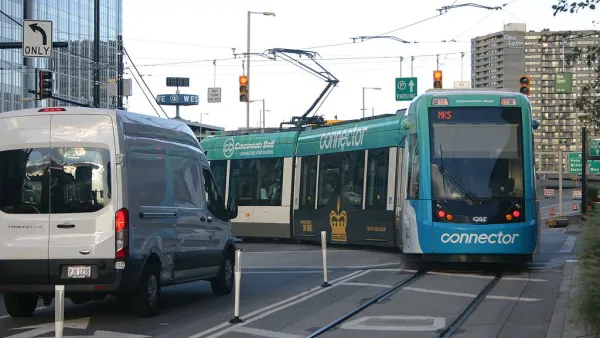The Minnesota State Legislature recently approved one of the most significant funding bills ever devoted to transit at the state level. The bill required rare political alignment and a new brand of advocacy.

The Minnesota State Legislature approved HF 2887 in May 2023, in effect adopting a transportation omnibus bill with $2 billion for public transit programs included in $9 billion total for transportation funds. Notably, the bill created several new funding sources, like a local sales tax, a gas tax indexed to inflation, a retail delivery fee, and a new sales tax on motor vehicles. Projects funded by the bill will include an intercity rail route between the Twin Cities and Duluth, an extension of the Blue Line light rail route between downtown Minneapolis and Brooklyn Park, and more.
The story of how the bill was approved provides a model advocates around the country, especially those operating in states with a Democratic trifecta in the governor’s office and the two houses of the legislature.
According to an article published by TransitCenter, the motivation for Minnesota legislators to approve the historic transportation bill came from not wanting to repeat a similar failure the last time Democrats held a trifecta—ten years ago. Further, the advocates quoted in the article from the Move MN, Sierra Club North Star Chapter, ISAIAH, and—all members of the Transportation Forward coalition—describe how HF 2887 was able to build support as a climate bill. Further aligning the stars for the coalition was the quick success of a 100 percent clean energy bill adopted in February and a ten-year effort to test transportation legislation and build to the historic moment.
More details of the advocacy coalition that achieved the success, and how it might provide a model for advocates in other states to achieve similar victories for transit and the climate.
FULL STORY: How Transit Advocates Scored a Major Victory in Minnesota

National Parks Layoffs Will Cause Communities to Lose Billions
Thousands of essential park workers were laid off this week, just before the busy spring break season.

Retro-silient?: America’s First “Eco-burb,” The Woodlands Turns 50
A master-planned community north of Houston offers lessons on green infrastructure and resilient design, but falls short of its founder’s lofty affordability and walkability goals.

Delivering for America Plan Will Downgrade Mail Service in at Least 49.5 Percent of Zip Codes
Republican and Democrat lawmakers criticize the plan for its disproportionate negative impact on rural communities.

Test News Post 1
This is a summary

Test News Headline 46
Test for the image on the front page.

Balancing Bombs and Butterflies: How the National Guard Protects a Rare Species
The National Guard at Fort Indiantown Gap uses GIS technology and land management strategies to balance military training with conservation efforts, ensuring the survival of the rare eastern regal fritillary butterfly.
Urban Design for Planners 1: Software Tools
This six-course series explores essential urban design concepts using open source software and equips planners with the tools they need to participate fully in the urban design process.
Planning for Universal Design
Learn the tools for implementing Universal Design in planning regulations.
EMC Planning Group, Inc.
Planetizen
Planetizen
Mpact (formerly Rail~Volution)
Great Falls Development Authority, Inc.
HUDs Office of Policy Development and Research
NYU Wagner Graduate School of Public Service





























